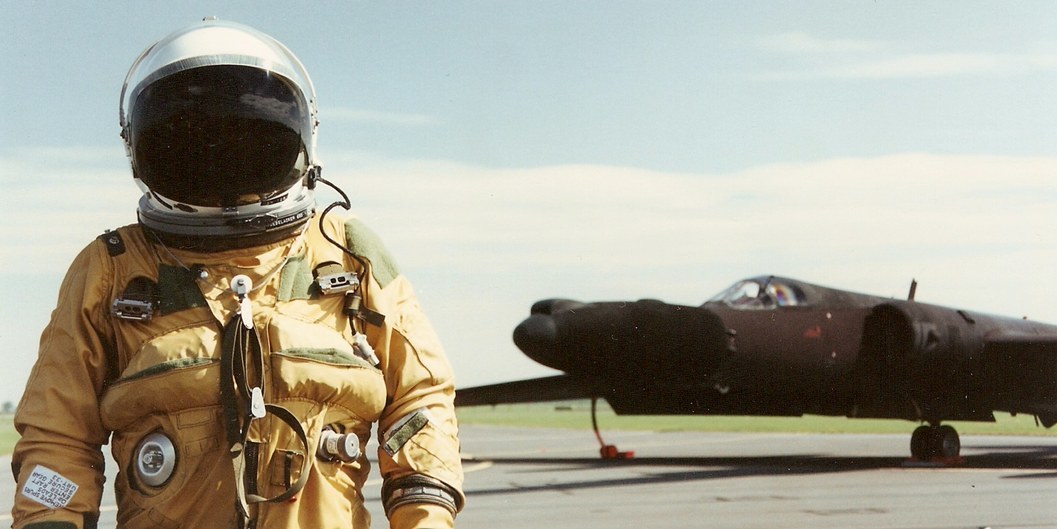While many people today associate the term U2 with a pop group, it was a U-2 spyplane that almost caused one of the most painful incidents of the Cold War 50 years ago. Brian Townsend reflects on one of the US government’s greatest diplomatic headaches of modern times.
There were maybe four or five occasions during the Cold War when the two power blocs the West, and the Soviet Union and its allies came perilously close to hot war, which might also have crossed the nuclear threshold.
In most of those the blockade of Berlin in 1947-48, Red China’s covert involvement in the Korean War after 1951, the building of the Berlin Wall in 1961, Russia’s crushing of the Hungarian uprising in 1956 and above all the Cuban missile crisis in 1962, it was beyond doubt the Communist bloc that instigated the crisis.
But there was one painful occasion, 50 years ago this month, when the fault lay indisputably with the West. On May 1, 1960, the Russians shot down a high-flying (up to 80,000ft) American spy plane, the U-2, near Sverdlovsk in central Russia. The pilot, Gary Powers, managed to bail out and was captured.
Normally the U-2, which had left a US airbase at Peshawar in Pakistan, was way out of range of Soviet ground-to-air missiles, but on that flight a technical fault meant the plane was flying far lower and was brought down by a missile. Russian missiles then were not too accurate one of them downed a Soviet Mig jet that was shadowing the U-2.
The Americans initially insisted the U-2 was a weather plane that had blown off course, whereupon the Russians produced photos of military bases, arms factories and other strategic locations they had salvaged from intact cameras in the wreckage. The Americans then said the event was a one-off, so the Russians produced radar logs proving U-2s had flown over Soviet territory countless times before. The US still tried to bluff and stonewall, but the Russians two months later put Gary Powers in trial and he vouchsafed nearly everything the Russians were claiming.
Understandably, the pugnacious Russian leader, Nikita Khrushchev, made political hay from the debacle and US President Dwight Eisenhower, in his final year in office, somehow managed to appear flat-footed at every turn.
It was a painful humiliation for the West, which Khrushchev gleefully exploited. A much-touted “Big Four” summit in Paris in June 1960 ended before it began, with Khrushchev blaming the shambles on the US and the U-2. Later that year, at the UN General Assembly in New York, Khrushchev made history by yelling at British Prime Minister Harold Macmillan during his speech to the assembly, and even took his shoe off and banged it on his desk. Supermac showed supreme British sangfroid by saying to the audience, “If someone could translate what he is saying, I would be happy to reply.”
The consequences of the U-2 affair are a source of some debate. It may well have influenced some US voters to vote for John Kennedy, instead of Eisenhower’s Vice-President Richard Nixon, in that year’s November presidential election. It certainly blighted the final months of Eisenhower’s presidency and overshadowed his twilight years.
At the end of his trial, Gary Powers was sentenced to 10 years, three in jail, seven in a hard-labour camp, but he was freed in February 1962 in exchange for Soviet spy Rudolf Abel. He was received coolly in the US but after debriefing and testifying to a congressional committee, its members praised how he had divulged very little key information to his Soviet interrogators.
He became a test pilot for Lockheed but was sacked after he co-authored a book about the U-2 affair in 1970. He later worked as a helicopter pilot with a Los Angeles TV station and was killed after his copter ran out of fuel covering a forest fire in 1977. Powers, just 48 and leaving a widow and two children, was buried at Arlington Cemetery.EmboldenedThe U-2 episode certainly emboldened Khrushchev but that, ironically, led to his eventual downfall. In 1962 he started supplying powerful missiles to Fidel Castro’s Cuba in the belief that the US, especially in the wake of the Bay of Pigs fiasco, had lost the will to challenge growing Soviet power. But spy planes like the U-2 spotted the missile sites and shadowed Soviet freighters carrying the missiles to Havana. In October 1962, President Kennedy called the Soviets’ bluff, and it was they who turned their freighters round and dismantled the Cuban missile sites.
Khrushchev never regained ascendancy after that and was ousted from power in October 1964. He died in September 1971. A final irony was that he had to have his memoirs published in the west because he had fallen so far out of favour in his homeland.
Could we ever see a similar incident to the U-2 in the future? Highly unlikely. With the Earth’s near-space today bobbing with satellites with pin-sharp cameras covering every square inch of the planet, planes like the U-2 are history but a painful history nonetheless.
U-2 and Gary Powers images used under Creative Commons licence from US Army source on Wikimedia Commons.
Pilot and plane image used under Creative Commons licence courtesy of Flickr user GJC1.
